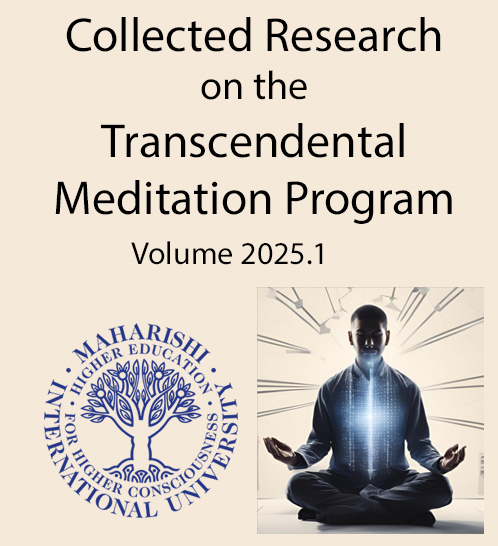Effects of cardiac rehabilitation with and without meditation on myocardial blood flow using quantitative positron emission tomography
A pilot study
Keywords:
Positron emission tomography, cardiac imaging, myocardial flow reserve, myocardial blood flow, transcendental meditation, meditation, stress reductionAbstract
Psychosocial stress is recognized as a risk factor for coronary heart disease (CHD). High rates of CHD in African-Americans may be related to psychosocial stress. However, standard cardiac rehabilitation (CR) usually does not include a systematic stress reduction technique. Previous studies suggest that the Transcendental Meditation (TM) technique may reduce CHD risk factors and clinical events. This pilot study explored the effects of standard CR with and without TM on a measure of CHD in African-American patients. Methods. Fifty-six CHD patients were assigned to CR, CR 1 TM, TM alone, or usual care. Testing was done at baseline and after 12 weeks. The primary outcome was myocardial flow reserve (MFR) assessed by 13N-ammonia positron emission tomography (PET). Secondary outcomes were CHD risk factors. Based on guidelines for analysis of small pilot studies, data were analyzed for effect size (ES).
Results. For 37 patients who completed post-testing, there were MFR improvements in the CR 1 TM group (120.7%; ES = 0.64) and the TM group alone (112.8%; ES = 0.36). By comparison, the CR-alone and usual care groups showed modest changes (1 5.8%; ES = 0.17 and 2 10.3%; ES = 2 0.31), respectively. For the combined TM group, MFR increased (1 14%, ES = 0.56) compared to the combined non-TM group (2 2.0%, ES = 2 0.08).
Conclusions. These pilot data suggest that adding the TM technique to standard cardiac rehabilitation or using TM alone may improve the myocardial flow reserve in African-American CHD patients. These results may be applied to the design of controlled clinical trials to definitively test these effects.


